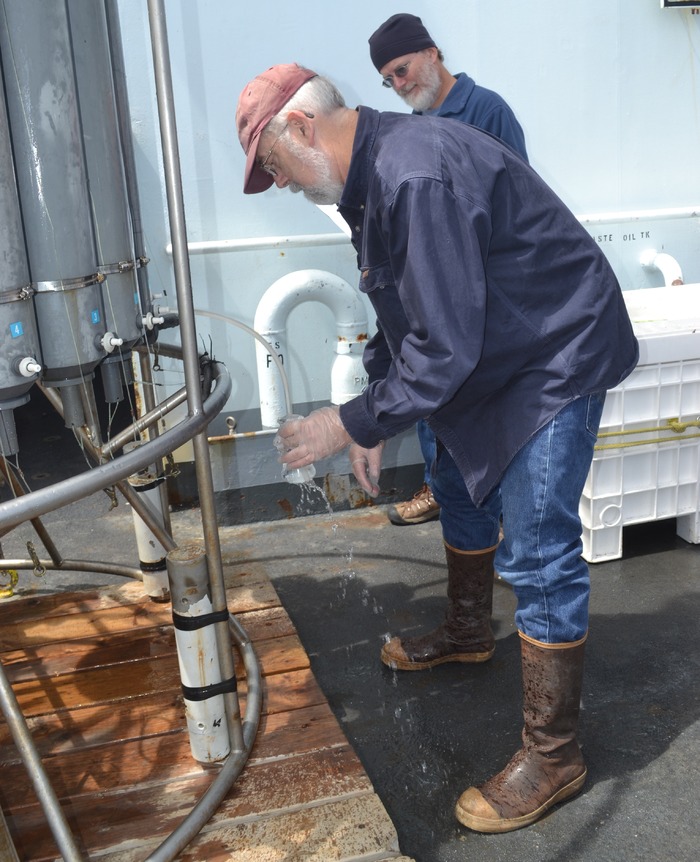The last leg of VISIONS'15 has been focused on servicing parts of the OOI Endurance Array. We are using many of the same technologies deployed at Axial Volcano and Hydrate Ridge to make observations in the Coastal Ocean. The Endurance Array, deployed across the coastal zone of the Pacific Northwest, includes two sites (Oregon "Shelf" and "Offshore") with instruments and platforms attached to the Cabled Array. We are launching these tools for scientists to study upwelling-driven processes and the influence of rivers (especially the Columbia) on the coastal zone. We hope to shed light on important environmental issues such as low-oxygen waters and dead zones, harmful algal blooms, and ocean acidification. It's exciting to be on the edge of operating this amazing new facility.
On this cruise, you have seen us deploy some powerful new technology for remote, continuous observation of the oceans. However, sometimes, routine chemical analyses in the laboratory still gives us the best accuracy and a connection back through many decades of studies of the oceans. Look forwarding, comparing it with the past. As I "assumed the position" sampling the CTD-rosette, my body remembers countless days (mostly nights) repeating this sampling dance. For over 40 years, I have stood here, carefully collecting samples for oxygen titrations, since I was a student like those sharing this expedition with me. Since then, I have done this same action during the discovery of hydrothermal vents in the Galapagos, the discovery of Hydrate Ridge in the 1990s, and on various submersible cruises from Easter Island, the Indian Ocean, Crater Lake, and back again to the Oregon Coast. These wonderful places are all connected. Oxygen tells us so much about the biology, chemistry, and physics of the environment … and perhaps it's fitting that we still go "old school" with titrations, just to get the story right.
Standing on the deck
water running down my leg
hearing oceans breath
… and sometimes, I can also hear my colleague, Jack Dymond say,
"I am carried along by memories of red cliffs,
dramatic skies, clacking sheep hoofs on rocks,
and profoundly honest conversations."
Bob Collier
Professor Emeritus
OSU College of Earth Ocean and Atmospheric Sciences


